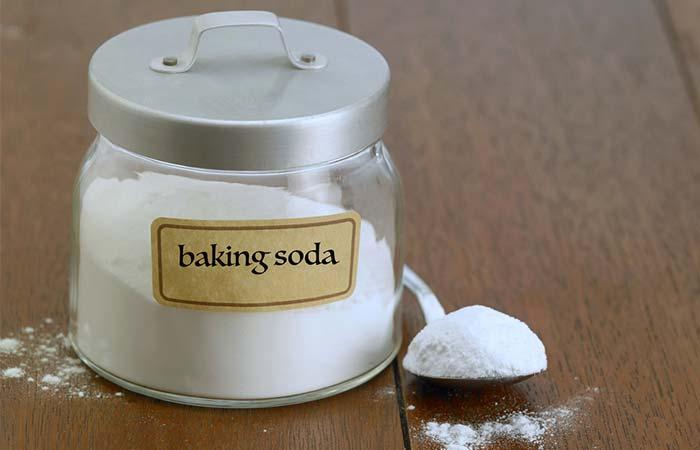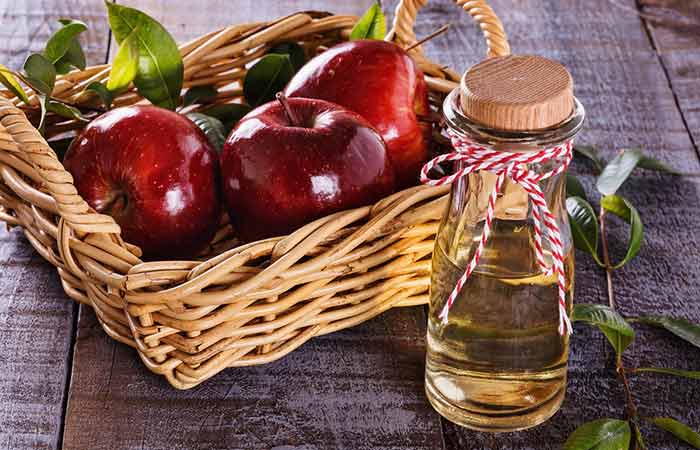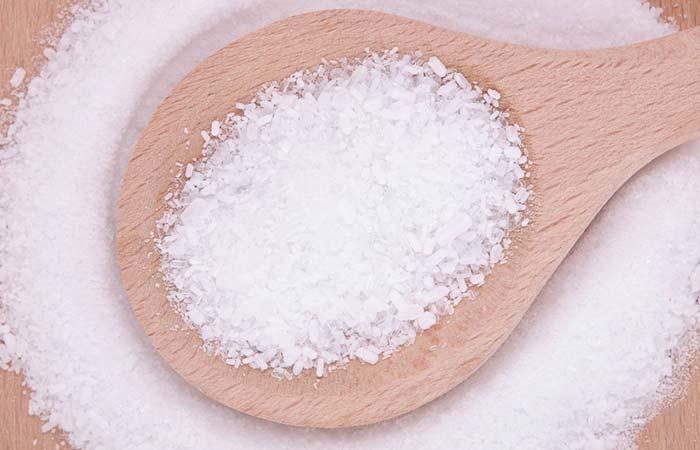If
you spend most of your time out in the garden or trekking in the wild,
you might be quite familiar with poison ivy. Any direct or indirect
contact with the oily resin secreted by this plant can cause rashes that
may take weeks to heal completely. Here are some of the best and most
effective natural remedies that can help you get rid of poison ivy rash
overnight. Read on!
Causes And Risk Factors Of A Poison Ivy Rash
Signs And Symptoms
Home Remedies To Treat A Poison Ivy Rash
Prevention Tips
A rash that results from contact with poison ivy often looks like a straight line because of the way it brushed against your skin. The severity of the rash depends on how much urushiol you have managed to get on your skin.
The factors that can cause or increase your risk of developing a poison ivy rash are as discussed below.
Table Of Contents
What Is A Poison Ivy Rash?Causes And Risk Factors Of A Poison Ivy Rash
Signs And Symptoms
Home Remedies To Treat A Poison Ivy Rash
Prevention Tips
What Is A Poison Ivy Rash?
Poison ivy is a climbing plant that secretes an irritant oil from its leaves. Allergic reaction to this irritant oily resin (called urushiol) results in rashes.A rash that results from contact with poison ivy often looks like a straight line because of the way it brushed against your skin. The severity of the rash depends on how much urushiol you have managed to get on your skin.
The factors that can cause or increase your risk of developing a poison ivy rash are as discussed below.
Causes And Risk Factors Of A Poison Ivy Rash
You can develop a poison ivy rash from the following:- Direct contact with any part of the poison ivy plant
- Touching objects contaminated with the oily resin from poison ivy
- Inhaling smoke from burning poison ivy plants
- Farming
- Landscaping
- Forestry
- Gardening
- Camping
- Fishing
- Hunting
Signs And Symptoms
When your skin comes in contact with poison ivy, it may become:- Red
- Swollen
- Blistered
- Itchy
A poison ivy rash can be difficult to get rid of, and it might also spread to other parts of your body if you don’t manage to get its resin off you soon. To prevent it from spreading further and treat the existing rashes, we have come up with a list of the best home remedies, which can be of great help.
Home Remedies To Treat A Poison Ivy Rash
1. Oatmeal Bath
You Will Need
- 1 cup of powdered oatmeal
- Bathwater
What You Have To Do
- Add a cup of powdered oatmeal to a tub filled with water.
- Soak in the water for 20 to 30 minutes.
- You can also place some powdered oats in a muslin cloth and replace your loofah with it.
How Often You Should Do This
You must do this at least once daily.Why This Works
Oatmeal possesses antioxidant and anti-inflammatory properties that can help in relieving the itching and inflammation associated with a poison ivy rash almost instantly (1), (2).2. Baking Soda
You Will Need
- 2 teaspoons of baking soda
- 2 glasses of water
- Sterile gauze pads
What You Have To Do
- Mix two teaspoons of baking soda with two glasses of water.
- Soak a few gauze pads in this solution.
- Place them over the rashes and leave them on for 10 minutes.
- Remove the gauze pads and wash the remnants off your skin.
How Often You Should Do This
Do this 3 to 4 times daily for a few days.Why This Works
Baking soda is alkaline and has pH neutralizing properties. It helps restore the pH of your blistered skin and promotes healing of the rashes. The antibacterial properties of baking soda protect the rashes from further infection (3).3. Apple Cider Vinegar
You Will Need
- 2 tablespoons of apple cider vinegar
- 1-2 glasses of water
- Sterile gauze pads
What You Have To Do
- Add two tablespoons of apple cider vinegar to two glasses of water.
- Mix well and soak a few gauze pads in this solution. Place them
- over the rashes.
- Leave them on for 5 to 10 minutes.
- Remove the gauze pads and wash off any remnants.
How Often You Should Do This
You can do this 2 to 3 times daily.Why This Works
Given its acidic, anti-inflammatory, and antimicrobial properties, ACV is one of the best options for treating a poison ivy rash (4).4. Bleach
You Will Need
- 1/4 cup of household bleach
- Bathwater
What You Have To Do
- Add one-fourth cup of bleach to your bathwater and mix well.
- Soak in it for 20 to 30 minutes.
- You can also spray some bleach on the poison ivy plant to kill it.
How Often You Should Do This
You must do this as soon as you come in contact with poison ivy for best results.Why This Works
Bleach contains chlorine, a natural disinfectant that tends to dry out your skin. The disinfecting and drying properties of bleach can soothe the itch and speed up the healing of the poison ivy rash (5).Caution
If you have sensitive skin, avoid this remedy as it might cause a burning sensation.5. Jewelweed
You Will Need
Crushed jewelweed plantWhat You Have To Do
- Crush the stems of the jewelweed plant to form a paste.
- Apply this paste over the rashes.
- Allow it to dry and then wash it off with water.
How Often You Should Do This
You must do this twice daily for a few days.Why This Works
Jewelweed is popularly known as the touch-me-not plant. It contains saponins that help in drying the liquid-filled blisters and soothe the itching and inflammation (6), (7), (8).6. Banana Peel
You Will Need
1 banana peelWhat You Have To Do
- Rub a banana peel over the affected areas.
- Leave it on for 10 to 15 minutes before washing it off with water.
How Often You Should Do This
You can repeat this remedy 2 to 3 times in a day.Why This Works
Banana peels are quite popular for their antimicrobial and anti-inflammatory properties. They help in soothing the itching and inflammation that accompany a poison ivy rash and protect your skin from further infection (9), (10).7. Toothpaste
You Will Need
Toothpaste (as required)What You Have To Do
- Take a little toothpaste on your fingers and dab it on the affected areas.
- Allow it to dry before washing it off with water.
How Often You Should Do This
You must do this 2 to 3 times daily until there are no traces of the rash.Why This Works
Toothpastes (especially the mint-flavored ones) exhibit exceptional soothing and cooling properties. The glycerin in the toothpaste helps in drying up the rash and speeds up its healing (11). It also reduces inflammation and redness.8. Essential Oils
a. Tea Tree Oil
You Will Need
- 2-3 drops of tea tree oil
- 1 tablespoon of any carrier oil (coconut or olive oil)
What You Have To Do
- Add two to three drops of tea tree oil to any carrier oil and mix well.
- Apply this mixture to the affected areas.
- Leave it on for 15 to 20 minutes and then take a bath.
How Often You Should Do This
You must do this at least once daily for a few days.Why This Works
Tea tree oil reduces inflammation and prevents infection in the affected areas due to its anti-inflammatory and antimicrobial properties (12), (13). It also eliminates pain, if any, and promotes faster healing of the rashes.b. Peppermint Oil
You Will Need
- 3-4 drops of peppermint oil
- 1 tablespoon of any carrier oil (coconut or jojoba oil)
What You Have To Do
- Add three to four drops of tea tree oil to a tablespoon of any carrier oil.
- Mix well and apply it to the affected area.
- Leave it on for 15 to 20 minutes and then wash it off with water.
How Often You Should Do This
Do this twice daily for a week or two.Why This Works
Peppermint oil is one of the best essential oils for treating a poison ivy rash. It contains antioxidants and an active compound called menthol, both of which help in soothing the rash (14).9. Coconut Oil
You Will Need
Coconut oil (as required)What You Have To Do
- Take a little coconut oil on your fingers and apply it to the rashes.
- Leave it on and let it be absorbed by your skin.
How Often You Should Do This
You must apply coconut oil 2 to 3 times daily for a few days.Why This Works
The anti-inflammatory, analgesic, and antifungal properties of coconut oil soothe and relieve the itching and the pain and also speed up your recovery (15), (16), (17).10. Epsom Salt
You Will Need
- 1 cup of Epsom salt
- Water
What You Have To Do
- Add a cup of Epsom salt to your bath.
- Soak in it for 20 to 30 minutes.
How Often You Should Do This
You must do this once daily for a week or two.Why This Works
Epsom salt contains magnesium, which imparts anti-inflammatory properties to it (18). This magnesium is absorbed by the skin, which reduces inflammation and promotes healing (19).11. Aloe Vera
You Will Need
Aloe vera gel (as required)What You Have To Do
- Apply a little aloe vera gel to the affected areas.
- Allow it to dry and reapply as required.
How Often You Should Do This
Apply aloe gel multiple times a day for a few days.Why This Works
Aloe vera contains active compounds that have healing, soothing, antifungal, and anti-inflammatory properties, which can treat a poison ivy rash (20), (21), (22).12. Lemon Juice
You Will Need
- 1 teaspoon of lemon juice
- 1 tablespoon of any carrier oil (coconut or olive oil)
What You Have To Do
- Mix a teaspoon of lemon juice with any carrier oil.
- Apply this to the rash.
- Leave it on for 10 to 15 minutes and then wash it off with water.
How Often You Should Do This
You can do this once every alternate day for a week or two.Why This Works
The acidic nature of lemon juice can help neutralize the pH of your blistered skin, thereby helping it to dry faster. Lemon is also a rich source of vitamin C, which has anti-inflammatory properties and can help in reducing the itching, inflammation, and swelling (23).13. Neem Oil
You Will Need
- 1 teaspoon of neem oil
- Any carrier oil (optional)
What You Have To Do
- Apply a little neem oil to the affected area and
- leave it on for 20 to 30 minutes.
- Wash it off with water.
- If you have sensitive skin, mix neem oil with a carrier oil of your choice before applying it.
How Often You Should Do This
You must do this 1 to 2 times daily for a week.Why This Works
Neem oil is another option that you can consider for getting rid of a poison ivy rash at the earliest. Its anti-inflammatory properties help in relieving the itching, inflammation, and redness (24). Neem oil also possesses antiseptic properties that protect the rash from infection.A poison ivy rash usually lasts for two to three weeks. But with proper treatment, it can disappear sooner. You can also take the following precautionary measures to prevent the recurrence of such rashes.
Prevention Tips
- Learn to identify poisonous plants and steer clear of them.
- Wear protective clothing if you are in surroundings that increase your risk of developing a poison ivy rash.
- Remove or destroy any such plants that you come across. However, do not burn them.
- Wash your hands, your pet and any other object that may have come in contact with poison ivy within 30 minutes of exposure to reduce the intensity of the rash.
- Apply a barrier cream whenever there is a risk of coming in contact with poison ivy.
Source Click here















Comments
Post a Comment